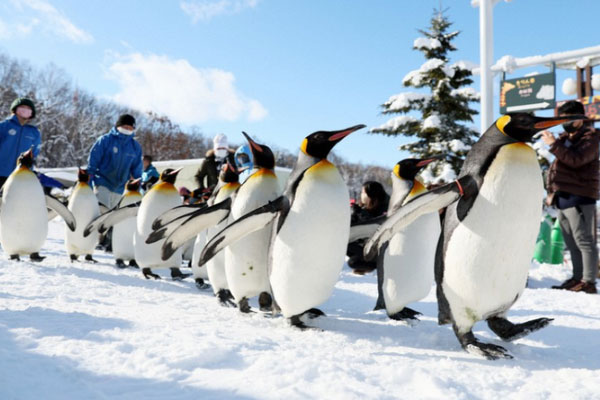The sight of penguins walking on snow in Hokkaido is a wonderful moment that tourists eagerly await during their visits.
The winter penguin walk at Asahiyama Zoo, Hokkaido, Japan has a long-standing tradition that many visitors look forward to experiencing firsthand.

The zoo organizes activities for penguins to exercise during winter.
This year, the event takes place on a round trip route of about 400 meters from the penguin house. The event will be held twice daily, at 11 AM and 2:30 PM, until around mid-March when the snow melts.
The annual event, which started in 2002, was created to allow penguins to exercise during the winter. This regular exercise routine aims to prevent the penguins from becoming overweight due to a lack of activity in the cold season.
The zoo management could not have anticipated that this initiative would be so well-received by visitors, making it one of the most popular attractions.
As one of the most famous zoos in Japan, with 150 different species, many of which are native to icy regions, the zoo attracts millions of visitors each year, far exceeding the local population.
All visitors are guided to stand in lines to watch the penguin parade. This year, the event started about 10 days later than usual due to the lack of significant snowfall.
During the event, 16 penguins exit the gate at once and walk for about half an hour on the snow that fell the previous night.
The appearance of the penguins excites the visitors lined up on both sides, as cameras and camcorders quickly capture the adorable moments of these rarely seen creatures up close.
The penguins walk in a line, with a guide leading the way holding a megaphone, while three or four attendants follow behind to assist any penguin that slips and falls.
Tensei Kato, 8 years old, visiting the zoo with his parents, shared: “The penguins are much larger than I imagined. It’s so cute when they flap their wings.”
Midori, 42, Tensei Kato’s mother, commented: “We are so lucky to see the penguin parade this year. The weather is very cold, but it’s amazing to see these birds that live in the polar regions.”


















































